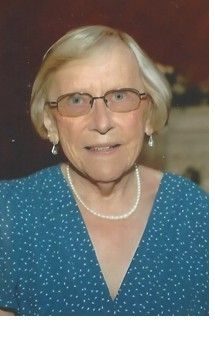Genealogists discover documents showing ties between Quincy and grandfather of Pope Leo XIV
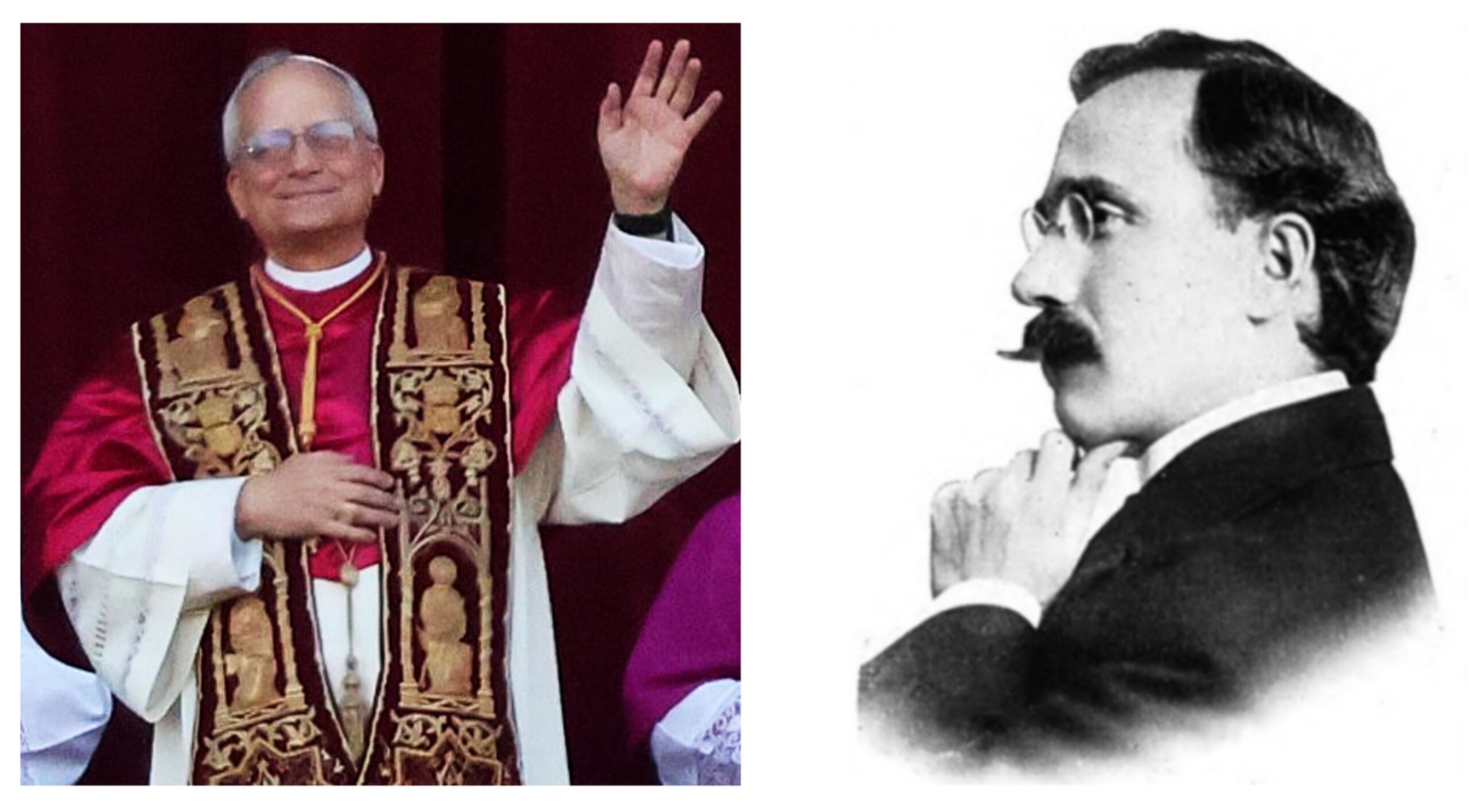
QUINCY — An international genealogy group released its research findings last weeks that say that the grandfather of Robert Francis Prevost — now Pope Leo XIV, the first American-born pope — taught Spanish and music while living in Quincy in the early 1900s.
International interest in the pope’s family history has been high since he was elected on May 8. NBC News reported on May 13 that Pope Leo XIV’s ancestry on his mother’s side shows ties to a prominent Creole family of color in Louisiana.
However, information about the pope’s paternal side has been slower to be revealed — in part because his grandfather appears to have changed his name after emigrating to the United States from Italy in 1903.
Aleteia, an online Catholic news and information website based in Paris, reported on May 10 that Leo XIV has been curious to learn more about his French roots. Marc Leboucher, a French publisher working on a book about the new pope, met him the day after his election.
“He simply approached and went around a few tables,” Leboucher told Aleteia.
Upon hearing about Leboucher’s French nationality, Leo XIV reportedly said, “You’ll be able to tell me about my grandfather’s origins.”
Pope Leo was born Sept. 14, 1955. His father, Louis Marius Prevost (1920-97), was a Chicago native who saw action in World War II. He was a naval officer on infantry landing craft in Normandy and the Mediterranean, and later he was a school system administrator. Pope Leo’s mother was Mildred Agnes Martínez (1912-90), also a Chicago native, a librarian with a master’s degree in education.
Sean Daly, a Franco-American genealogist based in Paris, published an article about “solving the mystery of Pope Leo’s European grandparents” May 15 on Geneanet, considered to be the top genealogy website in France. Some of the information in Daly’s story came from the research by the international genealogy group that meets on Discord, an instant messaging and VoIP social platform.
Sean Meyer, who lives in Chicago, was part of the Discord group that released on May 13 a 14-page document with its findings.
“There had been a lot uncovered on the New Orleans side, and (Leo’s) mother’s Creole roots and her family from Haiti, but there wasn’t as much that we knew about on the paternal side,” Meyer said. “When we started researching this side of the family, we started noticing some discrepancies.
“There wasn’t information about the Prevost family. The pope’s father always was a Prevost, and there was information on him, but there wasn’t information on the people listed on his birth record, and those names were John Prevost and Suzanne Fabre. So we wanted to explore further. Where was this John Prevost? Who was he?”
Pope’s grandfather taught Spanish at Quincy High School
The Discord group’s research determined that John Prevost was first known as Salvatore Giovanni Riggitano, who arrived in New York from Milazzo, Italy, on June 5, 1903. Shortly after his arrival, he traveled from New York to Quincy to meet with his sister, Victoria Cento, who lived at 934 Maine.
The Quincy Daily Journal reported on March 9, 1904, about Riggitano’s arrival and discussed the possibility that “John Riggitano” might stay — which he did. Between 1904 and 1907, he was enrolled at St. Francis Solanus College, where he was identified as an Italian.
The Quincy Daily Herald published a story on Oct. 17, 1906, that the Felt Studio of Music had hired a new professor, Signor Riggitano, “to teach French and Italian.” The Daily Herald then reported on Sept. 5, 1905, that Signor Riggitano was named the Spanish teacher at Quincy High School.
By 1908, Riggitano was a teacher at the Quincy Conservatory of Music and lived down the street from his sister at 836 Maine with the family of Vincent G. Chilmeni, a local fruit dealer and barber. He became engaged to Frances Christ, who also worked as a musician at the Conservatory of Music, but she died in March 1908.
Riggitano eventually expanded his teachings to Keokuk, Iowa. The Daily Gate City in Keokuk reported in November 1908 that he was “spending a few days” away from the conservatory in Quincy to teach local residents each week. “Giovanni Riggitano” regularly published advertisements for classes in the Keokuk newspaper.
His practice eventually moved to the Bruhl Conservatory of Music, where the Daily Gate City reported he was teaching in the Fort Madison, Iowa, area for $1 per lesson. He eventually was teaching in Galesburg, Keokuk and Burlington, Iowa, by the summer of 1910, and by October 1910, the Chicago Tribune was running advertisements for “The Riggitano Method,” taught by “Prof. Riggitano himself.”
In 1910, Givanni Riggitano was enumerated in Fort Madison as a lodger in the home of John and Mary Ballard. His occupation was listed as “teacher of languages.” The Daily Herald reported in February 1913 that Riggitano had been invited to the Illinois Congress to read a chapter of “Francesco” in Italian on Mother’s Day.
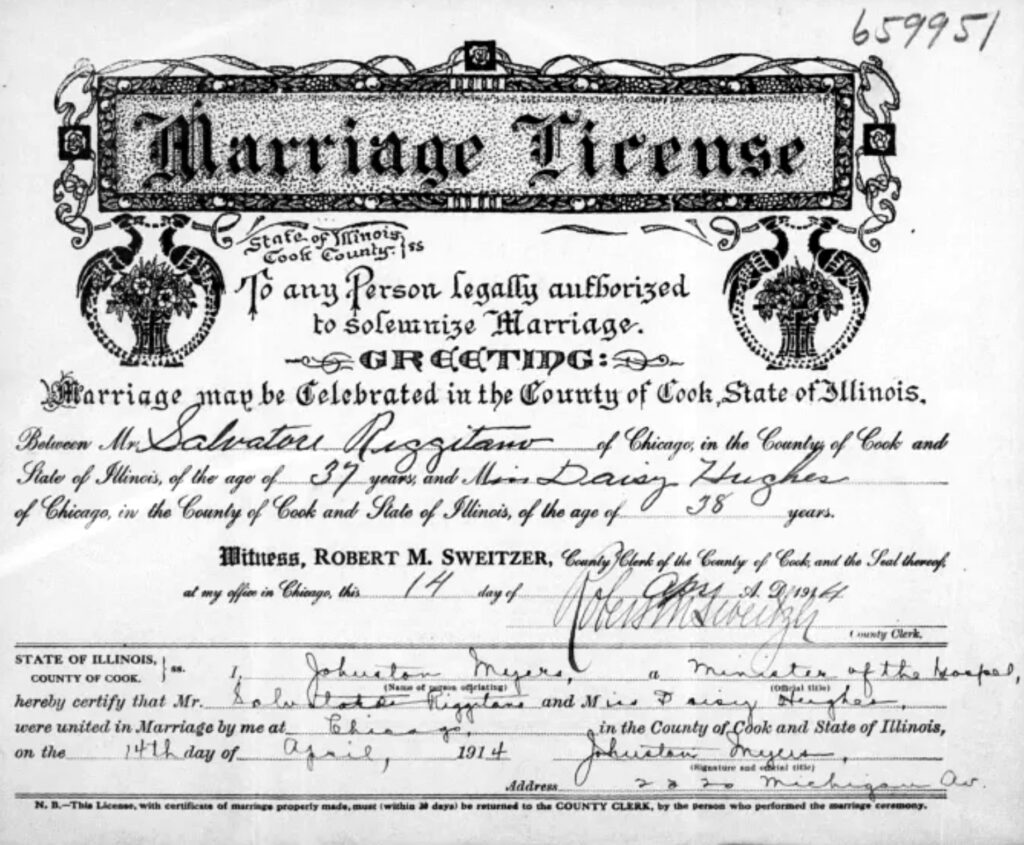
Riggitano eventually met and married Daisy Hughes, a native of Iowa, on April 14, 1914, at the Immanuel Baptist Church in Chicago. His new place of employment, the Spry School of Music in Chicago, was conducted by Walter Spry, a former resident of Quincy. The Daily Herald reported Riggitano was employed by the “Lovers of Italy” club to promote and encourage the Italian language.
Scandal erupts in Quincy with young woman
The 1920 census lists Salvatore Riggitano and Daisy Hughes living in the same household, but they had no children. A scandalous affair between Riggitano and a young Italian woman named Suzana Fountan, 28, of Chicago was reported by the Daily Herald in its March 19, 1917, edition with the headline, “Riggitano in Triangle.”
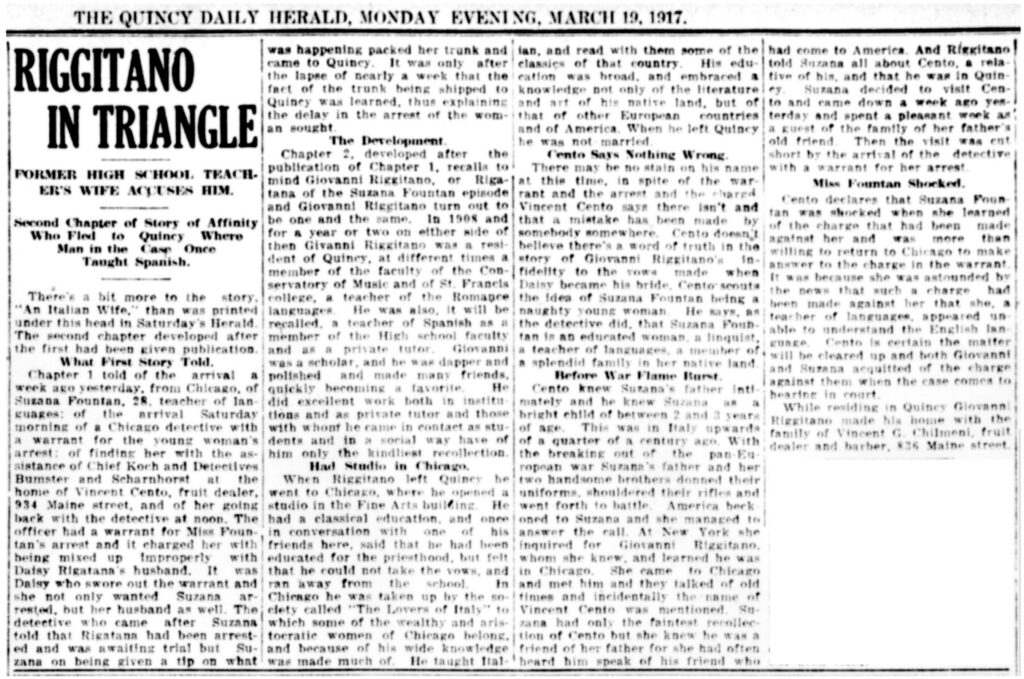
The Daily Herald reported a Chicago detective had arrived in Quincy with a warrant for Fountan’s arrest, and he received assistant from George Koch, chief of the Quincy Police Department, and two detectives. Fountan was arrested at the home of Vincent Cento, a fruit dealer who was married to Riggitano’s sister.
The warrant charged Fountan with “being mixed up improperly with Daisy Rigatana’s (sp) husband,” according to the Daily Herald. Riggitano was arrested in Chicago.
Another Daily Herald story said Fountan had learned of Riggitano’s arrest and come to Quincy, and detectives had traced her through the steamer trunk she had shipped separately to Quincy.
“Giovanni was a scholar, and he was dapper and polished and made many friends, quickly becoming a favorite,” the Daily Herald reported. “He did excellent work both in institutions and as a private tutor, and those with whom he came in contact as students in a social way have of him only the kindliest recollection.”
Vincent Cento defended Riggitano in the Daily Herald story, saying “a mistake has been made by somebody somewhere,” that he doesn’t believe there was “a word of truth” in the story of Riggitano’s infidelity and that Fountan was “shocked” by the charges. Cento also said he knew Fountan as “an educated woman, a linguist, a teacher of languages and a member of a splendid family in her native land.” He said he knew Fountan’s father when he was in Italy 25 years earlier.
Daly’s story said Riggitano and Fountan were released on bail and given a court date for April 1917. Daisy and Riggitano eventually separated without children, but Daly’s research never could find evidence of a divorce. Daisy died in 1939.
Geneanet learned that Fountan’s identity was Suzanne Louise Marie Fontaine (also known as Fabre), a French immigrant who departed from Le Havre, France on March 22, 1915, and settled in New York City, according to passenger arrival lists kept on Ellis Island.
Two months after the story of Riggitano’s infidelity was made public, a woman named Suzanne Fontaine — now listed as a governess — left Toronto, Canada, for Detroit, Mich. A child named John Centi Prevost — Prevost is Fontaine’s mother’s name — was born on July 22, 1917, to Fontaine and a man identified as “Jean Prevost” in Lackawanna, N.Y.
Geneanet found the birth certificate, which noted the birth took place at an infant home for unwed mothers. The father’s name was listed as “instructor.”
Fontaine and Riggitano eventually took the surname Prevost, and Riggitano adopted the name of John, the Americanized version of his middle name, Giovanni. The couple had another child in 1920, Louis Prevost — the father of Pope Leo XIV.
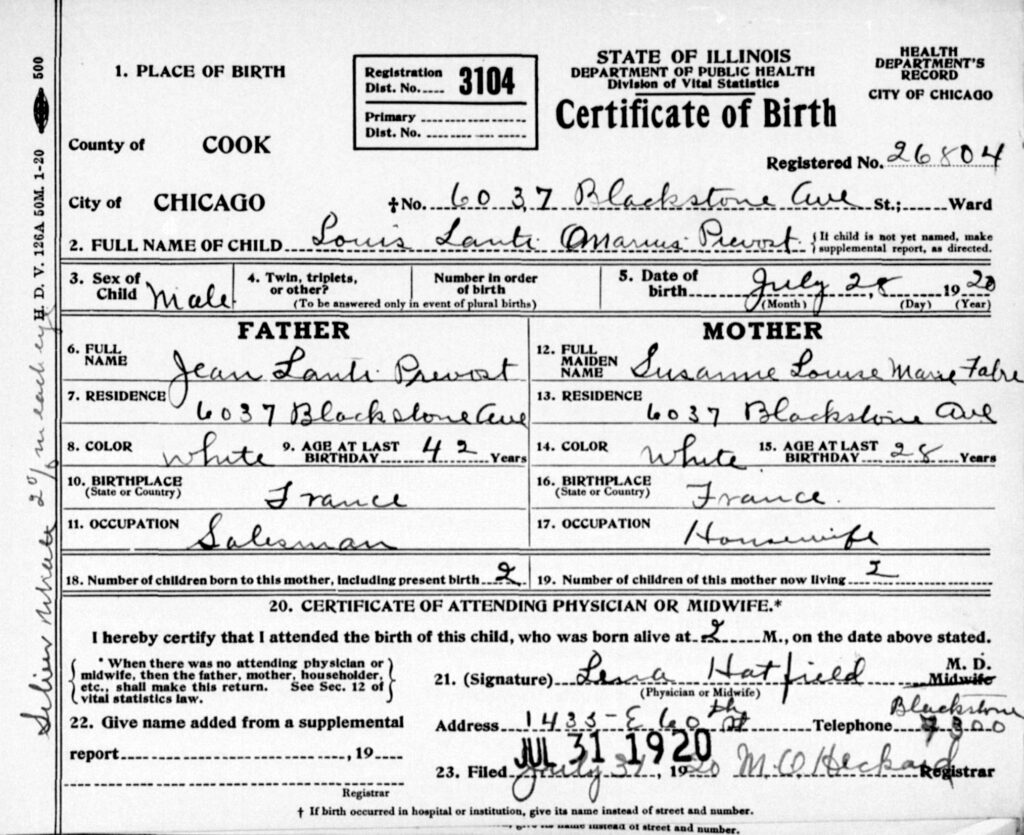
Naturalization records from 1927 show Daisy had stated she did not know where Riggitano was living. The last newspaper mention of Salvatore Riggitano was in 1930 in the St. Louis Post-Dispatch. The Discord group could find no more mentions of Salvatore Riggitano after 1935.
Researchers could not find an official marriage certificate for Riggitano and Fountaine, though they were listed as married on their Alien Registration (AR-2) form in 1940.
How was connection made between Riggitano and Prevost?
The name of Riggitano’s school was changed to the Riggitano-Prevost School in 1934, according to a classified ad in Chicago Tribune. The Discord group found that searching Chicago newspapers for “Prevost” returns many results for the Riggitano-Prevost School, which specialized in the arts and languages.
Meyer said researchers could not find anyone named John Prevost in the 1920, 1930 or 1940 cenus.
“But we started to find more coincidences and more pieces of information that would clarify and offer that the rabbit hole we were going down, that these two men were the same person, was solid,” he said. “The Quincy newspaper archive was actually a huge principal fact with helping establish this theory.”
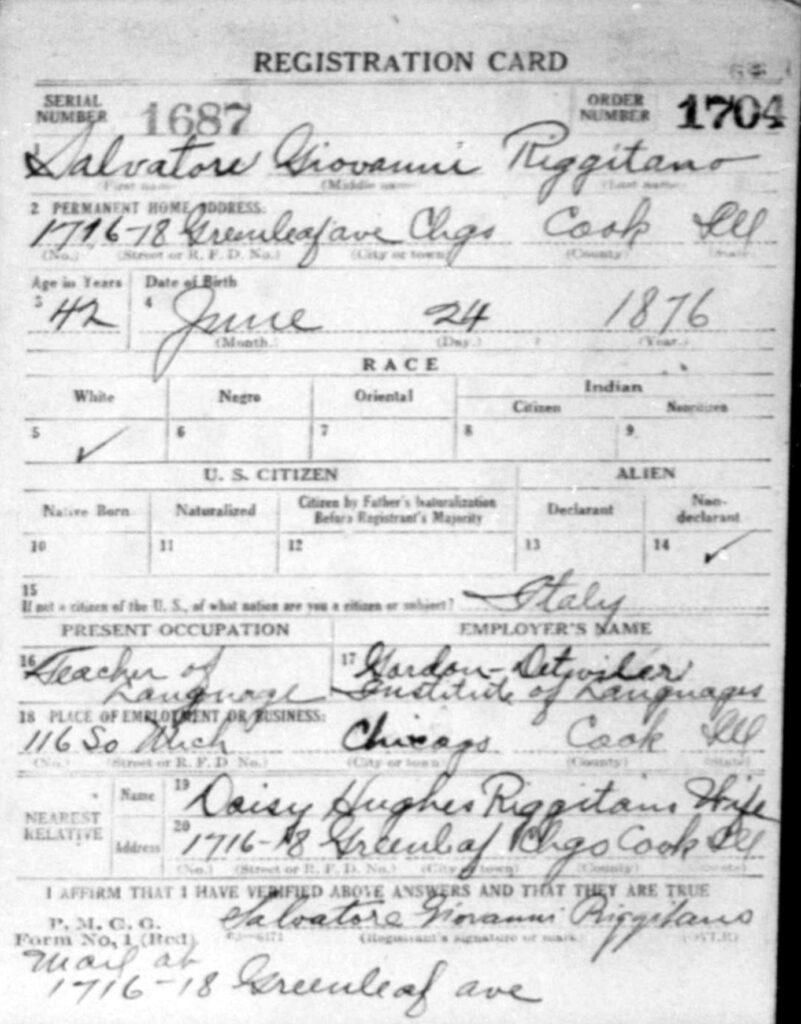
A World War I draft registration for a “Salvatore Giovanni Riggitano” reported a birthdate of June 24, 1876 — the same birthdate listed on John Prevost’s death certificate (he died May 22, 1960, in Cook County) and a Social Security application. Attempts to find a marriage record for John Prevost and Suzanne Fountaine were unsuccessful by the Discord group.
The earliest known record for Louis Prevost was when he registered for the World War II draft in 1942. His draft card listed his father, John Prevost, as his emergency contact, and it showed him living at 5465 Ellis Avenue in Chicago. The 1950 census showed John Prevost Sr. , age 73, living with his wife, Suzanne L. (a native of France), and their son, John C. Prevost, who was born in 1917 in New York. It shows John R. Prevost as a romance language teacher at a private language school.
Geneanet obtained from the National Archives database Suzanne Fontaine’s and John Riggitano Prevost’s alien file, which are official records of non-citizens in the United States. The Smith Act, created in the days following the fall of France in World War II, called for the registration and fingerprinting at local post offices of every non-citizen alien present in the United States for 30 days or longer. Exceptions were made for seamen, prisoners, and individuals subject to deportation.
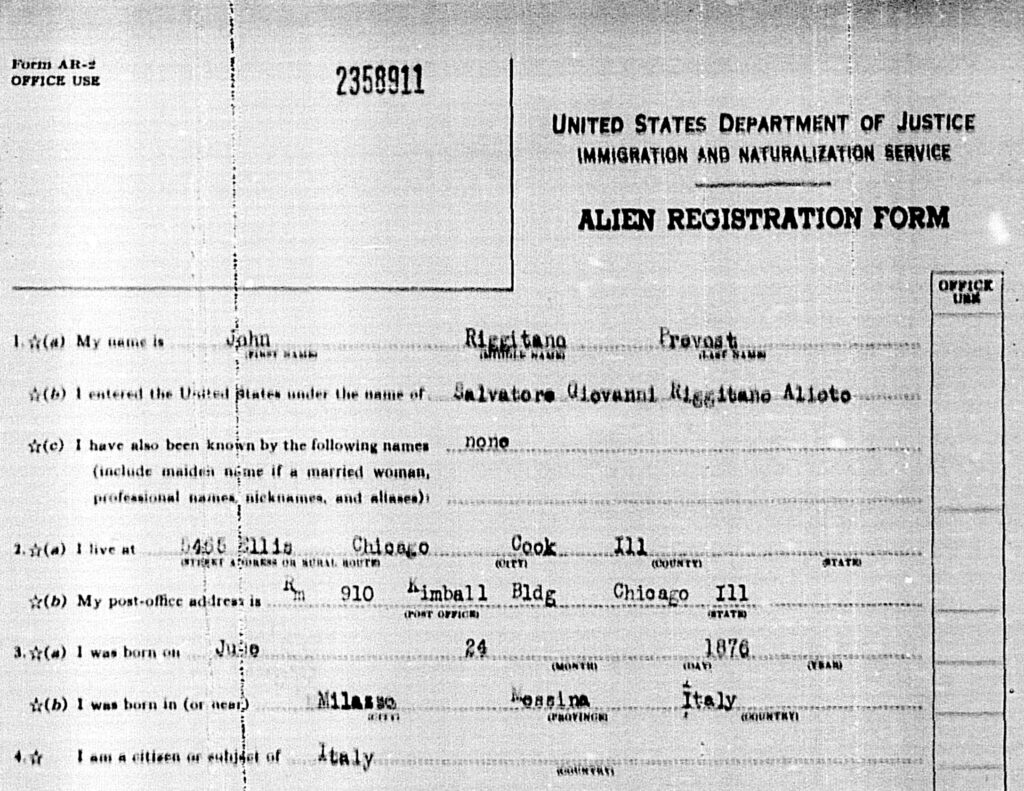
Salvatore Giovanni Rigittano’s file, listed under his alias, John Prevost, notes that his name upon immigration was “Salvatore Giovanni Riggitano Alioto,” and that he was self-employed at the Riggitano Prevost School of Languages. No evidence has been located indicating a formal name change.
A New York Times story about Leo XIV’s ancestry noted a death notice in 1960 made clear that the union of Riggitano and Fountaine was “deep and lasting.” The notice for John Prevost called him a “devoted husband of Suzanne,” a loving father of John C. and Louis M. and a grandfather of three.
A death notice for Fontaine in 1979 notes that she died in a hospital in Detroit at the age of 83, and that she was a member of the Third Order of Carmelites, a Roman Catholic religious order of laypeople. She was a “fond grandmother of Louis, John and Robert Prevost,” the notice said.
Meyer said no one in the Discord group has reached out to the Vatican, nor have they heard from the Vatican. He said the Discord group did not expect, “or necessarily even want,” any drama involving the pope’s ancestry.
“There were just questions on, who is he?” he said. “We wanted to find that. We don’t want this to become like a negative press thing, or like a smear campaign, that the pope’s father was born out of wedlock. That was not our intention, and we don’t necessarily want it to be something that’s shameful.
“A lot of people don’t know what happened in their family tree, and I can guarantee, like a lot of us, have out-of-wedlock ancestors we just don’t know about. Obviously, there’s the context of him being the pope, and we definitely were concerned with that form of press, but we feel confident in the research.”
Miss Clipping Out Stories to Save for Later?
Click the Purchase Story button below to order a print of this story. We will print it for you on matte photo paper to keep forever.

